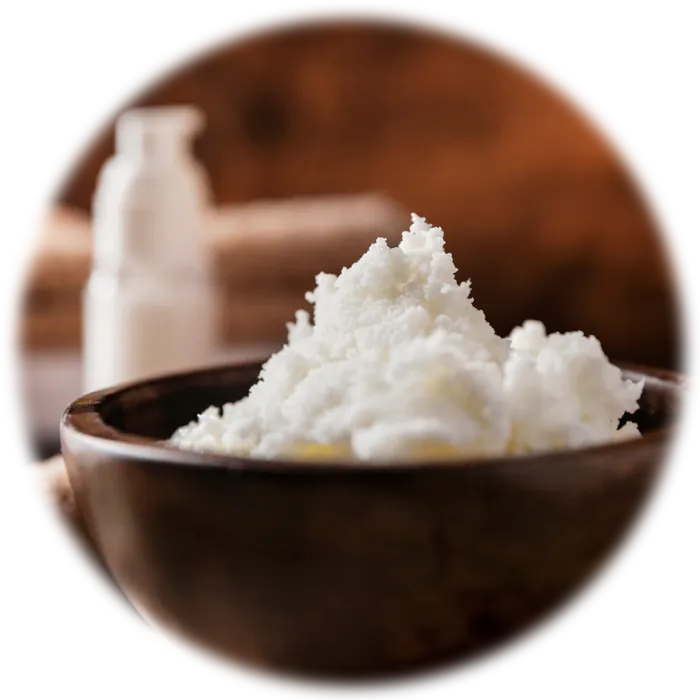Nutritional properties of Shea Butter
Energy :
900.00 Kcal / 100g
Category : Oils and Fats
Group : Cooking Oils & Specialty Fats
Composition And Nutritional Value :Shea butter is a natural fat extracted from the nuts of the shea tree (Vitellaria paradoxa), predominantly found in Africa. It is composed of a combination of triglycerides, fatty acids, and vitamins, with a high content of stearic acid and oleic acid, which provide moisture and nourishment to the skin. Shea butter is rich in unsaturated fats, including oleic acid, and contains significant amounts of vitamins A, E, and F, which are known for their antioxidant and skin-healing properties. Its unique composition allows it to hydrate, soothe, and protect the skin, making it a popular ingredient in skincare products. While not typically used as a food source, when processed and refined, it can be consumed in moderation as a cooking fat.
Health Benefits : Shea butter offers numerous health benefits, particularly for the skin. Its high concentrations of vitamins A and E make it effective in promoting skin health, including improving elasticity, reducing the appearance of scars and stretch marks, and preventing dryness. Shea butter’s anti-inflammatory properties help soothe irritated skin and conditions like eczema and psoriasis. Additionally, its moisturizing qualities can treat dry, rough skin and provide relief for cracked heels, elbows, and other dry areas. The antioxidants in shea butter can also protect the skin from harmful UV rays and environmental pollutants, though it is not a substitute for sunscreen.
Culinary Uses : Shea butter, in its unrefined form, is used in traditional cooking in some African cultures, especially for frying or as a substitute for other fats like butter or vegetable oils. It has a mild, nutty flavor and is often used to prepare traditional dishes, particularly in parts of West Africa. However, due to its relatively high cost and strong flavor, it is less commonly used in Western kitchens for cooking. Refined shea butter, which has a more neutral taste and odor, can also be found in some processed food products, though it is more widely used in cosmetics and skincare products rather than as a primary cooking fat.

